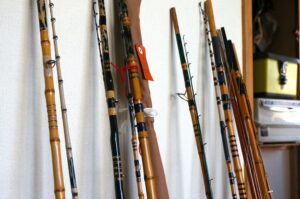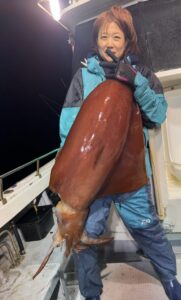Fuji Guide, Icon of High Quality Rods
“Fuji Guide” You may have seen it on the tag hanging on your rods. The rod with the tags is equipped with the highest quality line guides, made by the company called Fuji Kogyo Co., Ltd.
Fuji Kogyo is a Japanese company, which has revolutionized the fishing rods with innovation on line guides.
This article shows you what Fuji Kogyo is, and follows the innovation of fishing guides they made.
History of the company
In 1938, the company called Omura Seisakusho was founded by Rintaro Omura. While the founder had his strong passion in fishing, the company started with producing non-fishing products, until 1945. In that year, the company changed its name to establish Fuji Kogyo, and began manufacturing fishing tackle. The first fishing product was a reel.
The founder family’s passion drove the company to pursue the innovation of fishing tackle. One of the instances was evident from the fact that Ryuichi Omura won the first All Japan Sportscasting Championship, in 1960.
From 1950 and on, the company was putting more focus on the fishing rod components. In 1951, they introduced the first reel seats. The first guide was launched in 1955.
The significance in their innovation was the use of new materials. Fuji Kogyo pioneered the use of advanced materials in rod guides, introducing the industry's first ceramic guide ring, the "Fuji Ceraguide," in 1964.
According to their website, that guide’s importance is described like this. “This ceramic guide became the ‘roots’ and starting point for all fuji guides. The guide adopted a three-layer structure incorporating a shock ring that protects the ceramic ring from impacts, and a fully assembled frame with no welds.”
It tells us that the intricate construction of the apparently simple rod component. The shape of the frame was minimal but performed in the best way to hold the ring with enough strength on the rod blank. At the same time, this was well considered optimizing the production.
From this ceramic guide, Fuji Kogyo started leading the fishing guides, backed up with the high demand of the Japanese domestic fishing market.
This led to the further innovation of rings, to SiC (Silicon Carbide) materials in 1981 and to Torzite in 2013.
These innovations are not solely done by Fuji Kogyo. We cannot forget about Japan's historical advancement of technology in general. In the 1980’s, many kinds of industries showed the matured high-tech products. The SiC or Fine Ceramics’s production techniques were started being employed in Japan by the Kyocera company, then. That made the use of it possible in the fishing guides. This new material met the requirements for the fishing rod guides, such as high hardness and resistance against heat.
Superiority of their products are not only in the materials, but also in the shapes.
In 1966, they introduced the new design to pursue the casting distance, with tall and small diameter guides.
Though our present conceptions on long casting guides are different from that of the 1960’s, that guides were focusing on making the spiral of the released line smaller at the very first guide, closest to the butt section.
Whatever the result of the innovation, what struck us is the approach to the development. The clear concept was pursued and achieved with the up-to-date technology, in Fuji Kogyo in that era.
The innovation of shapes continued to produce the new shapes of foots, such as K-series guides of 2009.
This K-series guide was developed to avoid line tangling, particularly when using braided lines. The braided line is very light and much thinner compared with the monofilament line. It was the headache of a fisherman who used a braided line that it tangles around the guide to block the movement of the line. This K-series employs the unique shape of the foot to release the tangle naturally.
You can view the untangling of lines on K-guides in this video.
Fuji Kogyo has been utilizing the latest technologies in materials, such as Zirconia and Titanium. And their progress continues.
Revisiting the history of guides and its future
As long as there is a fishing rod with a reel, you need line guides on your rod. Starting from the metal wired rings in the early days, there were the guide rings made of stones, Agate rings. (Reference to Agate rings is here.)
Then in the middle of 1960’s a Japanese company took a step forward, as described above. It has continued to be the highest quality rod components supplier. However, there are competitions from a Chinese manufacturer, Sea Guide and an innovative US company, American Tackle Company etc. I hope that the competition brings the new products to provide more enjoyment to users.
What would the future guides be like?
If I dare say the viewpoint to consider about them, one thing is sustainability. The production of ceramic rings involves a strong impact on the environment, and decomposing it takes ages, which can be considered to be a stress to the environment. Truly environmentally friendly materials can be the next innovation. Another point is the integration with other tackles. While the guides are attached on the rod, in the conventional structure. This involves the big change in production methods as well as in the thinking around rods components. Daiwa's carbon guide and carbon wrapping can give us the hint for this direction.

